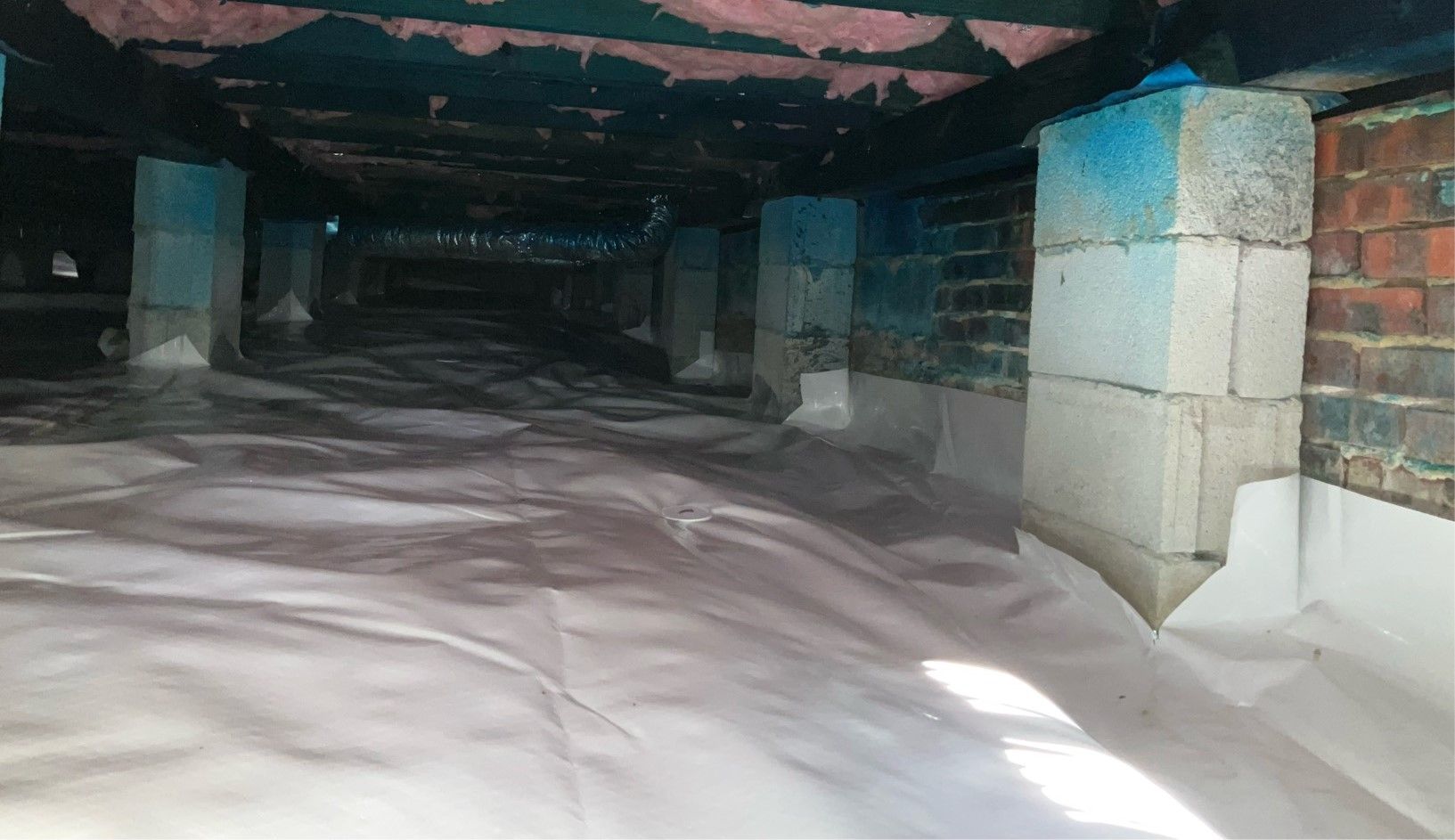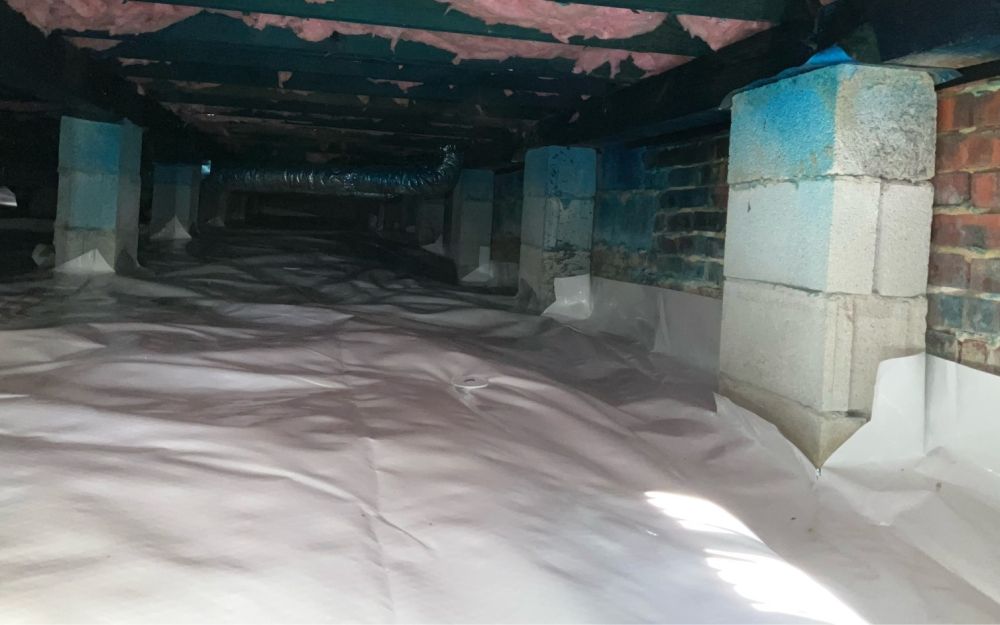The Do’s and Don’ts of Crawl Space Vapor Barriers



Did you know a 1,000-square-foot crawl space can allow up to 15 gallons of water (in vapor form) to enter it each day? When moisture accumulates in this often-neglected part of your home, it can cause serious issues.
Keeping your crawl space in good condition is essential for maintaining a healthy home. One important aspect of crawl space maintenance is using crawl space vapor barriers.
If you aren’t familiar with vapor barriers or what they do, you are in the right place. Learn more about these barriers and do’s and don’ts when installing and using them here.
Understanding Crawl Space Vapor Barriers
A crawl space vapor barrier is a protective layer that is installed in the crawl space of a building. It is typically made of plastic or foil.
Its purpose is to prevent moisture from seeping into the crawl space. The crawl space is the area between the ground and the bottom of the building. It is usually found in houses with a raised foundation.
The purpose of a crawl space vapor barrier is to create a barrier against moisture. It prevents moisture from entering the crawl space, potentially causing mold, mildew, and wood rot. Moisture can enter the crawl space through the ground or outside sources like rainwater.
The crawl space is kept dry and protected by installing a vapor barrier. It acts as a shield, blocking moisture and helping to maintain a healthy environment in the crawl space.
Proper installation and maintenance of a crawl space vapor barrier are important for the overall health and longevity of a building. Now that you know the vapor barrier, let’s move on to the do’s and don’ts of using one.
Do: Install a Properly Sealed Vapor Barrier
When installing a crawl space vapor barrier, it’s crucial to ensure it is properly sealed. Any gaps or tears can allow moisture to seep through, defeating the purpose of the barrier.
Use a durable material to cover the entire crawl space, including walls and floors. The best materials to use include the following:
- Plastic sheets or polyethylene
- Foil-faced insulation
- Cross-laminated high-density polyethylene (HDPE)
- Reinforced polyethylene
- Polypropylene
- Polyvinyl chloride (PVC)
Seal the edges and overlap securely to create an effective barrier against moisture.
Don’t: Neglect Regular Inspections
Regular inspections for the vapor barrier and crawl space should never be neglected. Ignoring these inspections can lead to potential problems and costly repairs.
By conducting routine checks, you can identify issues such as tears, punctures, or signs of moisture accumulation early on. Timely detection allows for prompt repairs. This ensures the vapor barrier’s effectiveness in preventing moisture from entering the crawl space.
Additionally, inspections can help you identify any other crawl space issues like pest infestations or plumbing leaks that may require attention. You can maintain a dry and healthy crawl space by staying proactive and conducting regular inspections. You can also avoid more extensive damage and preserve the overall integrity of your home.
Do: Invest in Crawl Space Encapsulation
Investing in crawl space encapsulation is a smart decision. It will help you maintain a healthy and energy-efficient home.
Crawl space encapsulation involves sealing the entire crawl space area. This includes the walls, floors, and vents. When you do this, it creates a controlled environment.
This process helps prevent moisture intrusion, mold growth, and pest infestation. It also helps to improve indoor air quality and energy efficiency.
Encapsulating your crawl space creates a barrier against moisture and pollutants. This reduces the risk of structural damage and health issues caused by dampness.
Additionally, encapsulation can enhance the overall comfort of your home and potentially lower your energy bills by reducing heat loss or gain. It’s a long-term investment providing numerous benefits for your home and your well-being.
Don’t: Store Water-Prone Items
Avoid storing items that can accumulate moisture in your crawl space. Items like cardboard boxes, old carpets, or wooden furniture can retain moisture and create a damp environment.
It is best to keep your crawl space clutter-free. Doing this will help maintain proper airflow and reduce the risk of moisture-related issues.
Do: Control Moisture Levels
Controlling moisture levels in your crawl space is essential for maintaining a healthy and dry environment. Excess moisture can lead to many problems, including mold growth, musty odors, and structural damage.
To control moisture levels effectively, consider utilizing a dehumidifier in your crawl space to remove excess humidity. Ensure proper ventilation by opening crawl space vents or installing a mechanical ventilation system.
It’s also important to promptly address any moisture sources, such as leaks or water seepage. Regularly check for and repair any plumbing leaks or foundation issues that could contribute to moisture problems.
By controlling moisture levels, you can prevent the growth of mold and mildew. This will help protect your home’s structural integrity and maintain a healthy indoor environment.
Crawl Space Care: Yearly Maintenance
Regular crawl space maintenance is crucial to keep it in optimal condition. Schedule yearly inspections to ensure the vapor barrier is intact.
An inspection will also ensure that no signs of water damage or mold growth are present. Additionally, clear away any debris, leaves, or branches that may have accumulated around the crawl space vents.
Understanding the Importance of Crawl Space Vapor Barriers
Proper care and maintenance of crawl space vapor barriers are vital for a healthy home environment. By following the do’s and don’ts here, you can ensure the effectiveness of your crawl space encapsulation system.
Install a sealed vapor barrier, control moisture levels, and schedule regular inspections. With these simple steps, you’ll keep your crawl space dry, clean, and free from potential issues caused by excess moisture.
If you need help or have questions, we can help. Contact us to schedule a free consultation.

